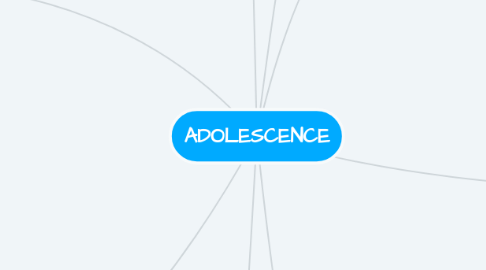
1. The Brain and Cognitive Development
1.1. The Brain
1.1.1. The Neuroconstructivist View
1.1.2. Neurons
1.1.3. Brain Structure, Cognition, and Emotion
1.1.4. Experience and Plasticity
1.2. The Cognitive Developmental View
1.2.1. PIaget's Theory
1.2.2. Vygotsky's Theory
1.3. The Information-Processing View
1.3.1. Cognitive Resources
1.3.2. Attention and Memory
1.3.3. Executive Function
1.4. The Psychometric/Intelligence View
1.4.1. Intelligence Tests
1.4.2. Multiple Intelligences
1.4.3. The Neuroscience of Intelligence
1.4.4. Heredity and Environment
1.5. Social Cognition
1.5.1. Adolescent Egocentrism
2. Gender
2.1. Biological, Social, and Cognitive Influences on Gender
2.2. Gender Sterotypes, Similarities, and Differences
2.3. Gender-Role Classification
2.3.1. Masculinity, Femininity, and Androgyny
2.3.2. Context, Culture, and Gender Roles
2.3.3. Androgyny and Education
2.3.4. Traditional Masculinity and Problem Behaviors in Adolescent Males
2.3.5. Gender-Role Transcendence
2.4. Developmental Changes and Junctures
2.4.1. Early Adolescence and Gender Intensification
2.4.2. Is Early Adolescence a Critical Juncture for Females?
3. Sexuality
3.1. Exploring Adolescent Sexuality
3.1.1. A Normal Aspect of Adolescent Development
3.1.2. The Sexual Culture
3.1.3. Developing a Sexual Identity
3.1.4. Obtaining Research Information About Adolescent Sexuality
3.2. Sexual Attitudes and Behavior
3.2.1. Heterosexual Attitudes and Behaviors
3.2.2. Sexual Minority Youths' Attitudes and Behavior
3.2.3. Self-Stimulation
3.2.4. Contraceptive Use
3.3. Problematic Sexual Outcomes in Adolescence
3.3.1. Adolescent Pregnancy
3.3.2. Sexually Transmitted Infections
3.3.3. Forcible Sexual Behavior and Sexual Harassment
3.4. Sexual Literacy and Sex Education
3.4.1. Sources of Sex Information
3.4.2. Cognitive Factors
3.4.3. Sex Education in Schools
4. Families
4.1. Family Processes
4.1.1. Reciprocal Socialization and the Family as a System
4.1.2. Maturation
4.2. Adolescent's and Emerging Adults' Relationships with Their Parents
4.2.1. Parents as Managers
4.2.2. Parenting Styles
4.2.3. Mothers, Fathers, and Co=Parenting
4.2.4. Parent-Adolescent Conflict
4.2.5. Autonomy and Attachment
4.2.6. Emerging Adults' Relationship with Their Parents
4.2.7. Intergenerational Relationships
4.3. Sibling Relationships
4.3.1. Sibling Roles
4.3.2. Birth Order
4.4. The Changing Family in a Changing Society
4.4.1. Divorced Families
4.4.2. Stepfamilies
4.4.3. Working Parents
4.4.4. Adoption
4.4.5. Gay and Lesbian Parents
4.4.6. Culture and Ethnicity
4.5. Social Policy, Adolescents, & Families
5. Puberty, Health, and Biological Foundation
5.1. Puberty Changes
5.1.1. Physical
5.1.2. Biological
5.1.3. Emotional
5.2. Health
5.2.1. Exercise & Sports
5.2.2. Nutrition
5.2.3. Sleep
5.3. Evolution, Heredity, & Environment
5.3.1. Natural Selection
5.3.2. DNA and the Collaborative Gene
5.3.3. The Epigenetic View
6. The Self, Identity, Emotion, & Personality
6.1. The Self
6.1.1. Self-Understanding and Understanding Others
6.1.2. Self-Esteem and Self-Concept
6.1.3. Self-Regulation
6.2. Identity
6.2.1. Erikson's Ideas on Identity
6.2.2. The Four Statuses of Identity
6.2.3. Developmental Changes in Identity
6.2.4. Identity and Social Cotexts
6.2.5. Identity and Intimacy
6.3. Emotional Development
6.3.1. The Emotions of Adolescence
6.3.2. Hormones, Experience, and Emotions
6.3.3. Emotion Regulation
6.3.4. Emotional Competence
6.4. Personality Development
6.4.1. Personality
6.4.2. Temperament
7. Moral Development, Values, and Religion
7.1. Moral Development and Domains of Moral Development
7.1.1. Moral Thought
7.1.2. Moral Behavior
7.1.3. Moral Feeling
7.1.4. Moral Personality
7.1.5. Social Domain Theory
7.2. Contexts of Moral Development
7.2.1. Parenting
7.2.2. Schools
7.3. Values, Religion, and Spirituality
8. Introduction
8.1. The Historical Perspective
8.1.1. Early History
8.1.2. The Twentieth and Twenty-First Centuries
8.1.3. Stereotyping of Adolescents
8.1.4. A Positive View of Adolescence
8.2. Today's Adolescents
8.2.1. Adolescents in the United States
8.2.2. The Global Perspective
8.3. The Nature of Development
8.3.1. Processes and Periods
8.3.2. Developmental Transitions
8.3.3. Developmental Issues
8.4. The Science of Adolescent Development
8.4.1. The Scientific Method
8.4.2. Theories
8.4.3. Research
